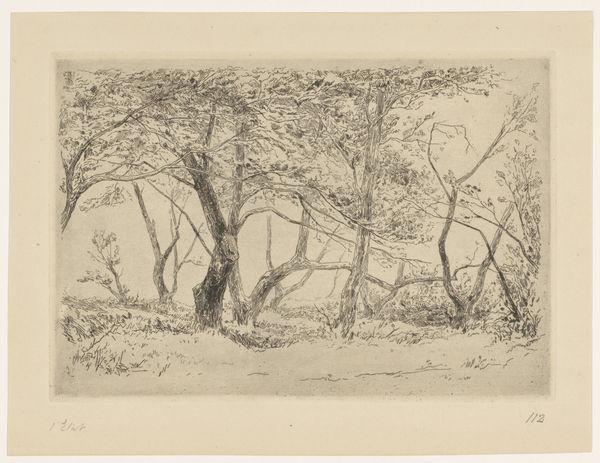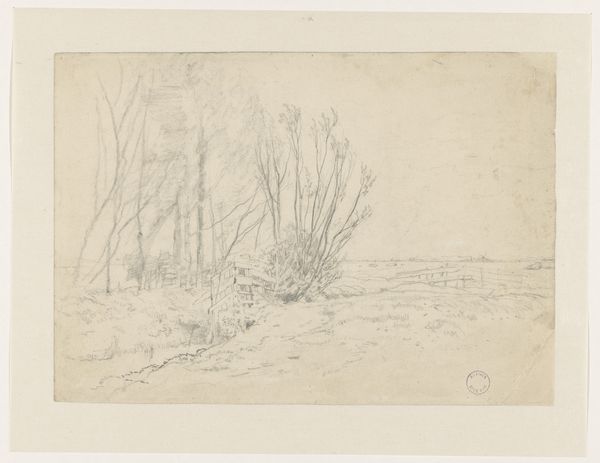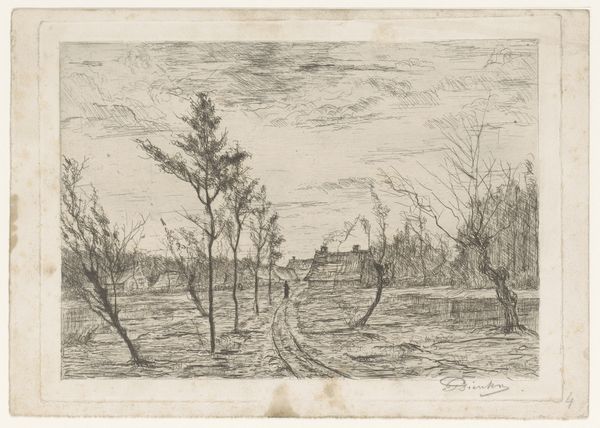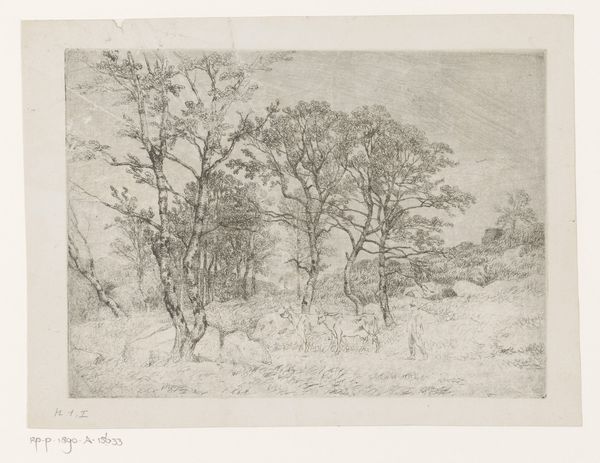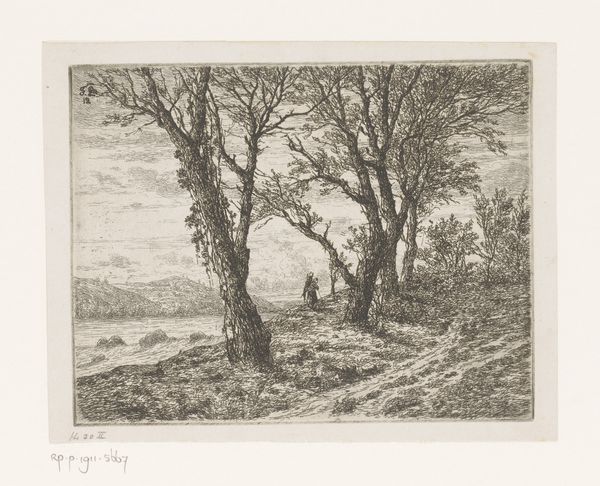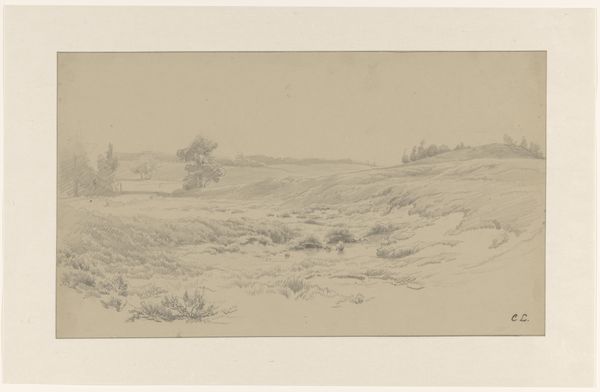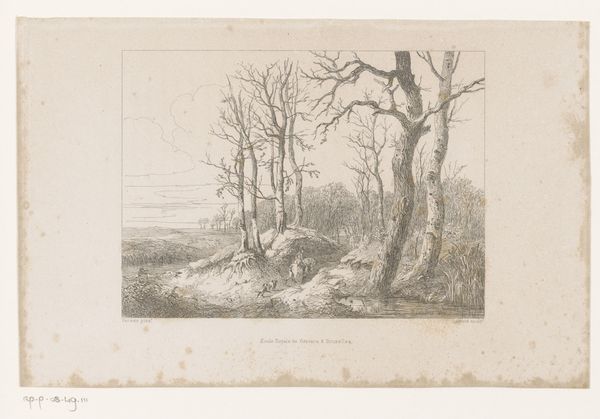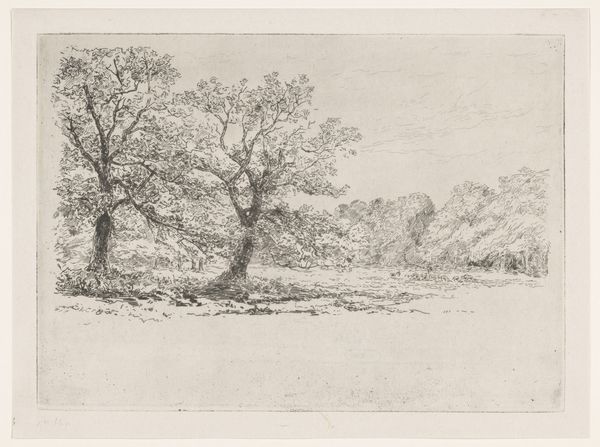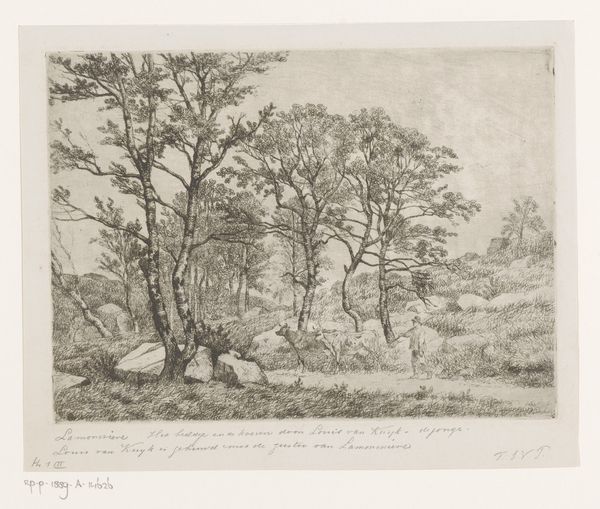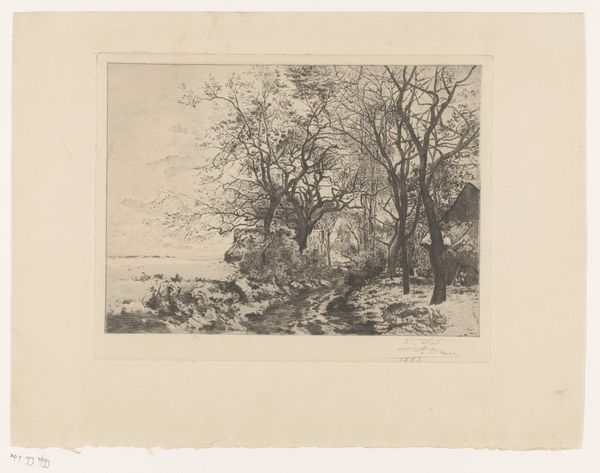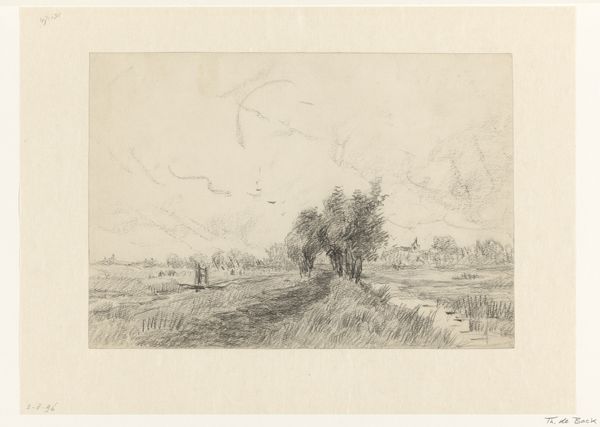
drawing, print, etching, paper
#
drawing
# print
#
etching
#
pencil sketch
#
landscape
#
figuration
#
paper
#
pencil drawing
#
line
#
pencil work
#
northern-renaissance
Dimensions: height 561 mm, width 763 mm
Copyright: Rijks Museum: Open Domain
Editor: Right, let’s dive into this etching by Wijnand Otto Jan Nieuwenkamp. It’s called "Vellen van iepen aan de Zuidervesting te Edam," which translates to something like “Skins of Elm Trees at the Southern Bulwark in Edam." Made between 1912 and 1915. What catches your eye? Curator: It’s terribly evocative, isn’t it? Those stark trees against that pale sky, the intricate, almost nervous lines… It's winter made visible, somehow. I feel a chill just looking at it. Editor: Absolutely. And considering Nieuwenkamp's own background, we can read so much into it. His extensive travels through the Dutch East Indies, his later affiliation with the Dutch Ethical Policy... It’s hard not to view even a simple landscape as a statement on colonialism, exploitation, even loss. Curator: Loss…yes! I agree. The stripped trees, the rawness…they definitely suggest something beyond mere landscape. There's a rawness about the forms, especially the trees. A sort of brutality? Or is it strength in survival? The texture achieved through etching… It feels very physical to me. Editor: Right, the "skins" of the trees, as the title suggests, feel vulnerable, peeled back, and exposed. Perhaps referencing the exploitation of resources, or even a comment on the rapidly changing landscapes in the Netherlands at the time, in relation to modernization and urban expansion? And consider the absence of people—only the architecture, which could be a deliberate statement about labor relations, land ownership, and structures of power. Curator: You're seeing politics, I see ghosts. The empty spaces, the tangled branches, the starkness... To me, it speaks more of memory and melancholy, of a past lingering in the present. A touch romantic, maybe? But also a bit…menacing. It makes you wonder, what narratives are the buildings hiding, you know? Editor: Well, perhaps art finds its fullest form at this intersection – where memory meets the sociopolitical realities. But either way, the history behind how this came to be surely influences how we read those ghost stories that you pointed out. Curator: I think I see it now: that dance of personal experience, historical burden, etched in stark lines. I wonder what a poem written from these landscapes would be like? Editor: And I can't help but think about the unseen laborers whose presence and lives shaped Edam as Nieuwenkamp encountered it and sought to represent. A visual reminder to seek them in the history. Curator: An agreement, then. Something more than what meets the eye.
Comments
No comments
Be the first to comment and join the conversation on the ultimate creative platform.
